“So, please don’t queue in chaos, but stand in a straight line!” – that’s what the attendant told us when we waited for the train from Pingyao to Xi’an. Having said this, she hurried away without looking back. The funny thing was that there were just the 3 of us plus another German backpacker “queueing in chaos”, and that the train stopped 20 m farther, so we had to walk to the entry anyway. Somehow this situation is typical for China. You will be told to follow the rules – may they make sense or not – but no one controls whether you really do it. Nevertheless, Chinese still tend to comply strictly with how they are supposed to behave. On the other hand, if they are not officers, they find it very cool when you don’t.
Sometimes this obsession with rules is a bit annoying, but fortunately we continue meeting great people here. Same day, same place, when we were walking to the train station, James started talking to us and accompanied us. He is a young student who comes to touristy Pingyao at least once a week to improve his English speaking skills. By discussing with him, showing him our passports and laughing a lot, we soon became the main attraction in the whole station and were surrounded by shy, but interested Chinese persons. We really had the impression that they would love participating in the conversation. Once again we experienced that many Chinese are open-minded.
Not only this, they also can be great hosts. On our first evening in Xi’an, we were invited by the parents of a Chinese friend of Wu Jiqing, who studies with him in Zürich. We went to a normal restaurant for dinner and they showed us, sorry for the redundancy, some very delicious local specialties. The highlight was a slightly sweet rice soup, made with vines and a bit viscous. Afterwards we had fun to exchange some compliments about each others’ countries. The parents were worried about our well-being, luckily without exaggerating their generosity, that sometimes makes one feel a bit ashamed. For example, they always offered some more food, but when we were satisfied, they accepted it. Some people may think that many special norms hamper the interaction in China, but we had the impression that being polite and respectful is all what matters. That’s why we had a relaxed, nice evening.
Let’s come to our program: Xi’an used to be the capital of China in the first millennium AD. At its best times, it had up to one million inhabitants, before the emperors decided to move to Beijing. For comparison, in the middle-age even the most important European cities had hardly 100 000 people. Moreover, Xi’an was the starting point of the famous “Tang Silk Road”. After this description you may think of a glamorous city, but nowadays reality falls short of history. Xi’an has grown and modernized and somewhere in this process it must have lost its soul. Again, the population has risen to several millions living in depressing prefabs, the city is overcrowded by tourists and an incredibly dense smog conceals many sights. In fact, the smog can be so terrible that you cannot see 500 m far. Datong was ugly as well, but here at least the street vendors created some atmosphere. In Xi’an they have been replaced by interchangeable western-style shopping malls and Starbuck’s coffees.
Nevertheless, some interesting properties remain. The impressive city wall has been rebuilt and the traditional bell and drum towers as well as the “Big Wild Goose Pagoda” are nice to see. Due to its history as a center of global trade, Xi’an houses an important Muslim community. Perhaps for the tourists they act a bit more Muslim-like than they really are, but obviously there definitely is some influence. Some people do not look Chinese, several women in the streets wear the chador (interestingly it is far less spread at the Muslim ceremonies), there is a bazaar where you can bargain and, sorry for the redundancy, you can taste an interesting mix of Chinese and middle-east cuisine: you find kebab, shashlik and flat-bread. Not surprisingly there is also a Mosque, the “Great Mosque”, built nearly completely in traditional Chinese style, but with Arab letters on the walls. After visiting it, we realized that we had spent Easter there ….
Of course, we also visited the main tourist spot in the area: the world famous “Terra-Cotta Warriors”. It is very fascinating that about 2000 years ago, Emperor Qin was able to force his people to rebuilt almost his whole army as terra-cotta statues, such that he would be accompanied by them in his death. The statues are buried in 3 different pits which were hidden, and each warrior is unique, representing one single soldier who lived at that time. They were painted and are extremely detailed, up to the profile of the shoes. Furthermore, there are horses and carriage and everyone had weapons which were chrome-plated in order to protect them against corrosion – a technique rediscovered only in 1937 …. The site was discovered in the 1970s and a lot of work is still to be done, that’s why you can watch the archaeologists reconstructing the statues, solving a huge 3-dimensional puzzle.
From there we went to a place very well-known in China, but still undiscovered by Western mass tourism: “Hua Shan”, the most important of the “Five Sacred Mountains of China”, and definitively deservedly so: The mountain is limited by extremely steep cliffs on all sides, it is so amazing that even the graphic designers of “The Lord of the Rings” were not bold enough to invent a place like this. From all of the five main peaks you get a stunning view on the canyons and the huge white rock mountains surrounding Hua Shan. We went up, spent the night there and enjoyed the morning’s first light at the “South Peak”, before trekking to all other summits. We guess we have brought Wu Jiqing to the limits of his physical abilities, but he greatly mastered the challenge and apparently he also enjoyed it – at least afterwards. Since “Hua Shan” is a holy site, thousands of pilgrims make the way up. However, the religious motive does not seem to be the predominant reason, rather think of Santiago de Compostela than of Lourdes. So you see Chinese of all ages and in every possible shape, trying to ascend the approximately 1500 m of altitude, which can be walked on thousands of stair steps. And we were surprised how many of them really make it to the top. When it comes to such challenges, Chinese live according to the Nike Ad: Just Do It!
Unfortunately, Xi’an was the last station we were able to discover together with Wu Jiqing, who now has to leave us to spend some time with his family in Shanghai before returning to Europe. Wu Jiqing, we really enjoyed the time with you, you were not just a great “guide” but rather an awesome travel partner. You enabled us to gain extremely valuable insights into the real China. We hope and we are confident that you also loved the two weeks with us and discovered lots of new things. We are looking forward to seeing you again in Europe and travelling together there!
Nice Hostels in Xi’an: Bell Tower Youth Hostel and 7 Sages Youth Hostel
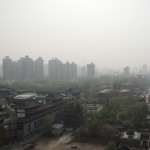
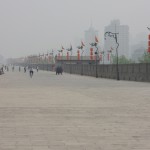
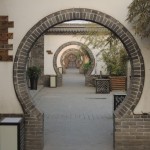
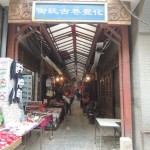
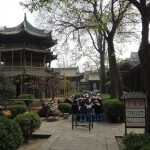
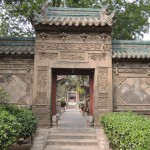
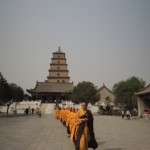
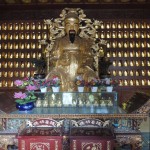
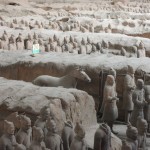
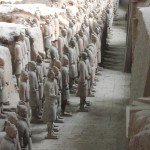
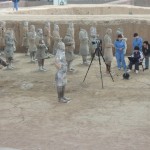
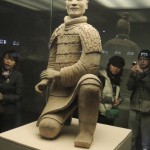
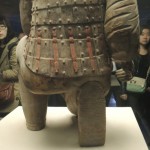
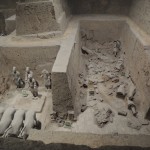
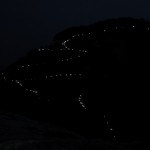
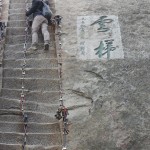
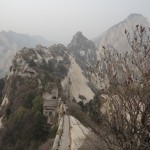
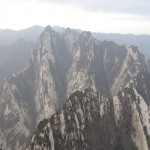
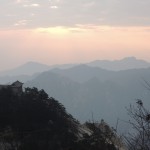
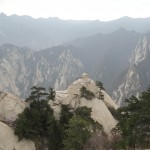
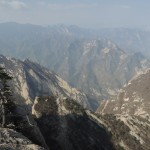
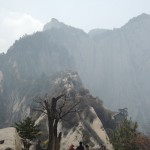
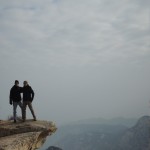
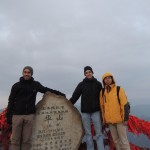
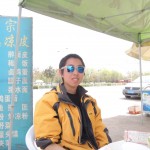
Quand je vois les photos de Hua Shan, je pense à la chanson de Marie Laforêt :
Viens, viens sur la montagne, tout près du ciel, j’ai ma maison…
Oh Gott: http://www.youtube.com/results?search_query=Hua%20Shan